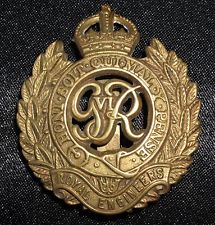
Ernest Sidney Alexander West

1st (Wessex) Field Company
Lance Corporal 810
 | Ernest Sidney Alexander West |  |
| Royal Engineers 1st (Wessex) Field Company Lance Corporal 810 | ||
| Died of wounds 5th October 1916 |
Ernest West's Parents | ||
|
Ernest West’s
parents were Sidney West and Mary Ann (née Alexander). Sidney West was born in Bath in 1868 to parents who had
migrated from Critchell (Dorset) and Radstock. Sidney’s father was a beer house
keeper and the 1871 census (when Sidney was two years old) shows him living
with his parents and three siblings at 1 Beaufort Buildings on the
London Road. This is still a licensed premises ('One Beaufort'), but today is more of a
‘restaurant/bar’ and probably considerably more upmarket than in 1871! | ||
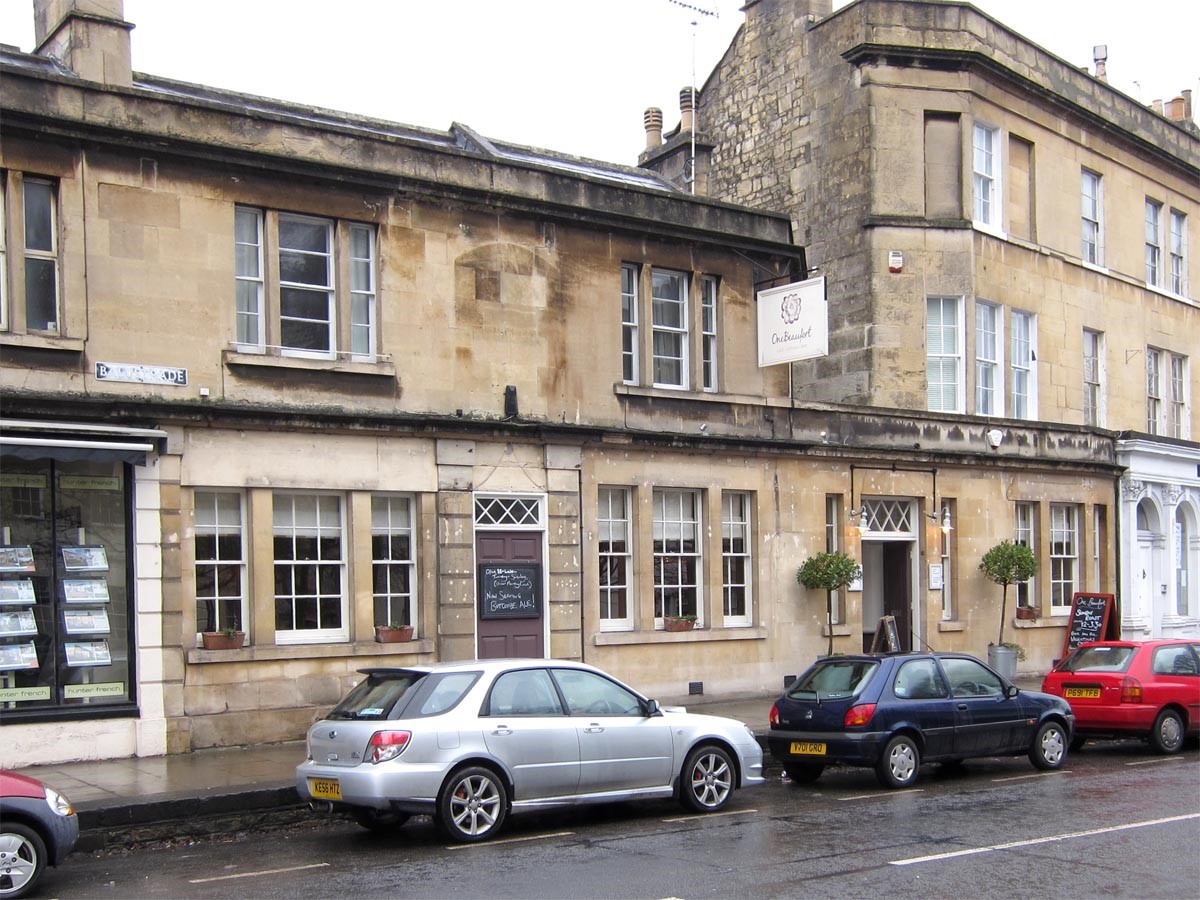 | ||
|
'One
Beaufort', Bath, today. This is where Ernest West's father lived as an
infant; Ernest's grandfather was the landlord in 1871. [Image: www.bathrestaurants.co.uk] |
|
Sidney’s father moved in 1873 (when Sidney was aged about 5)
to the Britannia Inn, Walcot. This later changed its name to the Piccadilly
(its address on London Road is Piccadilly Place), and is still trading as a pub,
now called The Hive. |
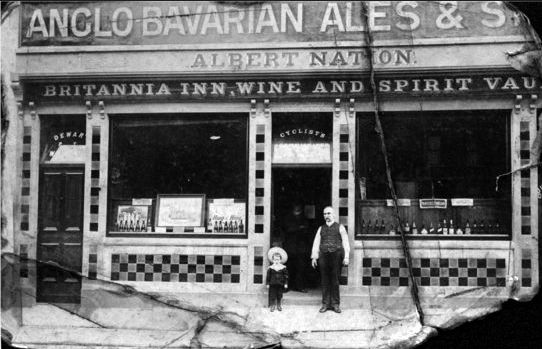 | ||
|
ABOVE: The Britannia Inn on London Road - see here circa 1911 - where Ernest West’s grandfather was landlord in the 1870s. [Image: http://www.bristolslostpubs.eu/] BELOW: In a more recent incarnation as the Piccadilly Ale House. Now 'The Hive'. [Image: www.geograph.org.uk] | ||
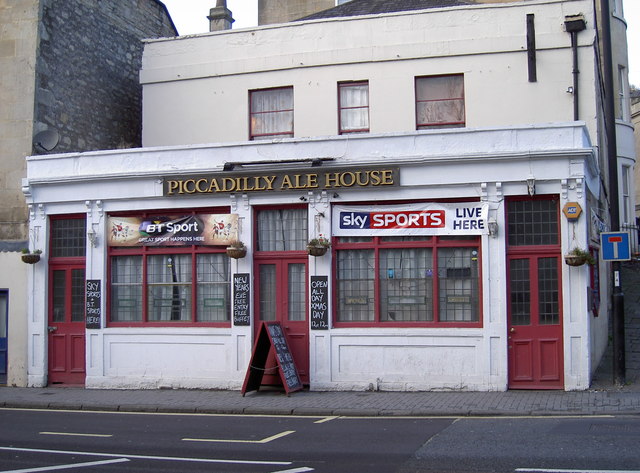 |
|
Sidney’s father died in 1880 and in 1881 the census found Sidney West living at 4 St Anns Place in Kingsmead with his widowed mother and five siblings. St Ann’s Place is an interesting little side-street off New King Street. Bath used to be full of little courtyards and back alleys between the grand Georgian buildings; often these were quite low-grade housing and were gradually cleared away over time as expectations of standards of hygiene etc. increased. Few such courtyards remain, but look for Shum’s Court (off the north side of Cheap Street) as another example. St Ann’s Place itself was very run down at one point, especially in the 1960s, as it was earmarked for development to make way for a massive road scheme that would have put motorway-like roads around to the south and west of Queen Square. |
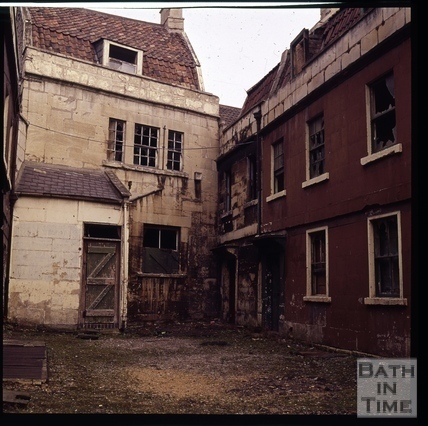 | ||
|
ABOVE: St Ann’s Place in 1972 [Image: BathInTime]. This is where Ernest’s father
was living with his widowed mother in 1881. It is typical of a type of
courtyard that could once be seen throughout Bath, but now very few remain. It
was scheduled for demolition in the 1960s but survived and has now been
restored. [Image below: www.wikimapia.org] | ||
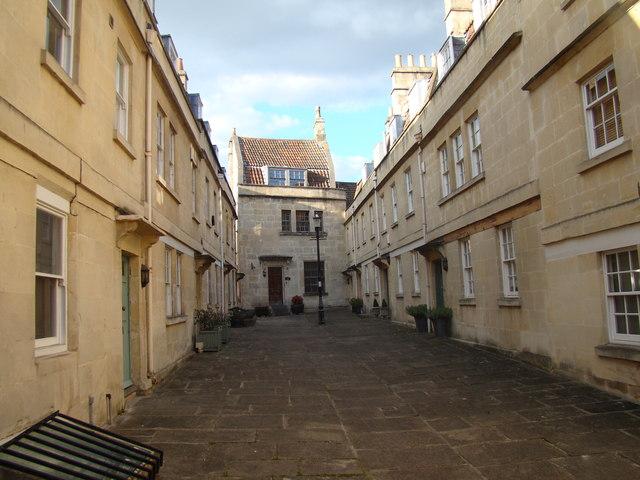 |
| In the 1891 census Ernest's father Sidney was living at 4 Sydenham Road with his mother Hannah and sisters Florence and Frederica (‘Kate’), although his mother was away visiting family in Frome on the night of the census. Sydenham Road ran northwards from the Lower Bristol Road, roughly opposite the intersection with Cheltenham Street. It led down to a large property called Sydenham House, which had extensive gardens along the river. Now only the first few metres of Sydenham Road remain. |
|
By 1891, Sidney had become a timekeeper on the Somerset & Dorset railway, in which capacity he appeared as a witness in the 1893 trial of some felons who were found to be routinely stealing goods from the railway. As timekeeper, Sidney would have been responsible for the smooth running of trains to a given schedule in an age where there was no Internet, no speaking clock and no public radio broadcasting available to synchonise clocks. Different railways managed this in different ways, but Sidney would have been involved in ensuring that all aspects of the network ran according to a synchronised timekeeping system. His role in the trial was to attest whether the felons would have had time to unload goods from stationary trains as they waited in specific locations. Ernest’s mother, Mary Ann Alexander, grew up as the daughter of a farm labourer in Marksbury but, at the age of 21, is listed in the 1891 census as being one of the many servants employed at the ‘Royal College’, now the Royal High School, on Lansdown. |
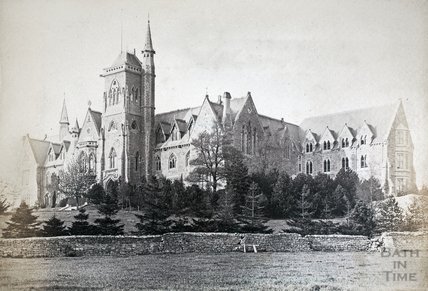 | ||
|
'The Royal School for Daughters of Officers of the Army', Lansdown, seen here in
about 1890, at the time when Ernest’s mother was working there as a servant. [Image: Bath In Time] |
|
Sidney West and Mary Alexander married in 1892 at St Mark’s Church,
Widcombe. St. Mark's is now deconsecrated and used as a pre-school and community centre. |
The West Family |
|
Sidney & Mary had three children:, of whom two survived: |
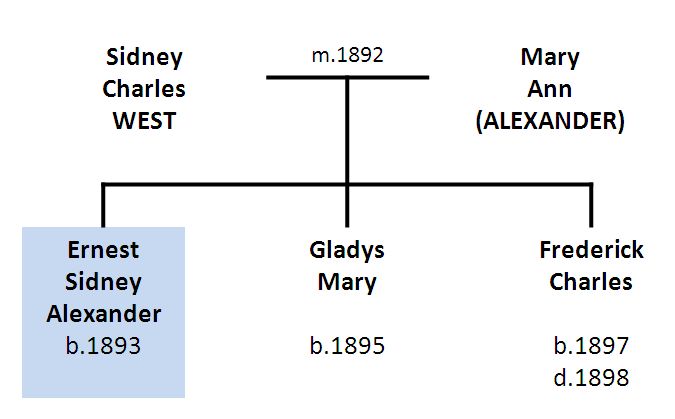 |
|
The family unit had a tendency to move around. The first
family home (1892-4) was at 70 Hungerford Road, where Ernest was also born, as we can tell from later census listings,
which give his birthplace as ‘Lower Weston’. |
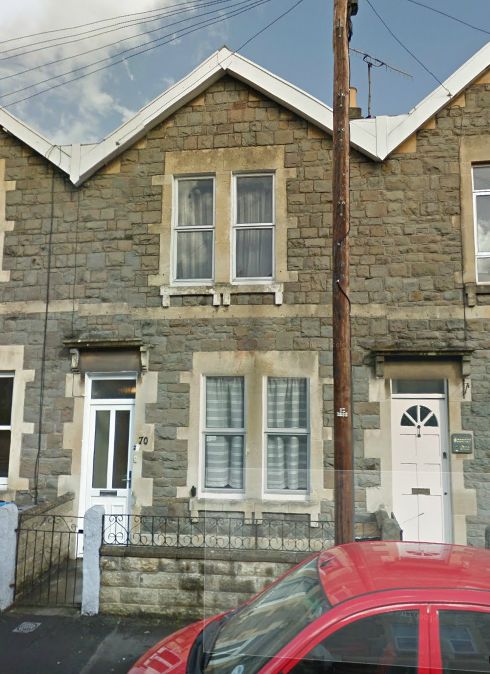 | ||
|
70 Hungerford Road, Lower Weston, where Ernest was born in 1893 |
|
The
family then lived at 20 Victoria Buildings (on the Lower Bristol Road) in
1895-6 (where sister Gladys was born), then at 43 Lorne Road in 1897-8, when Ernest’s father Sidney’s job
description changed from ‘timekeeper’ to ‘clerk’. |
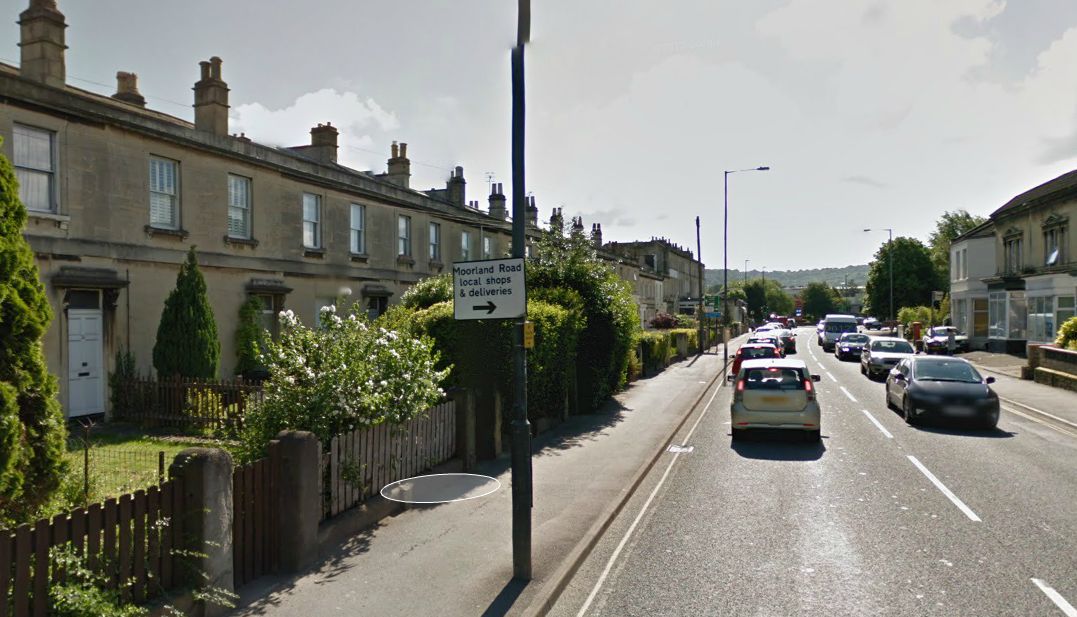 | ||
|
20 Victoria Buildings, on the left of this photograph, was home to the West family around 1895-6. |
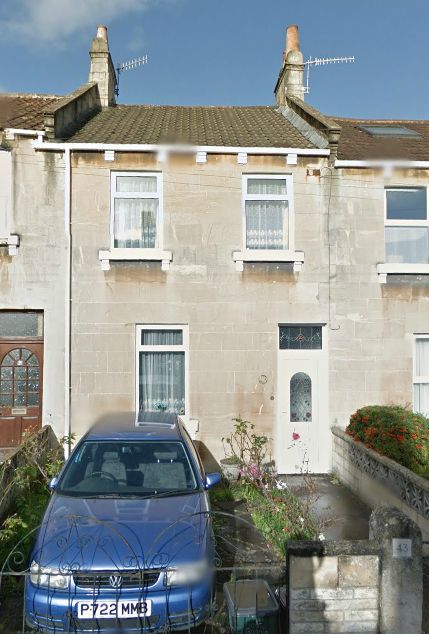 | ||
|
43 Lorne Road, the West family home circa 1897-8 |
| The next family home (1899-1901) was at 7 Belvoir Road, at which address the family was residing at the time the 1901 census was taken. The house had previously been occupied by the Gunning family! |
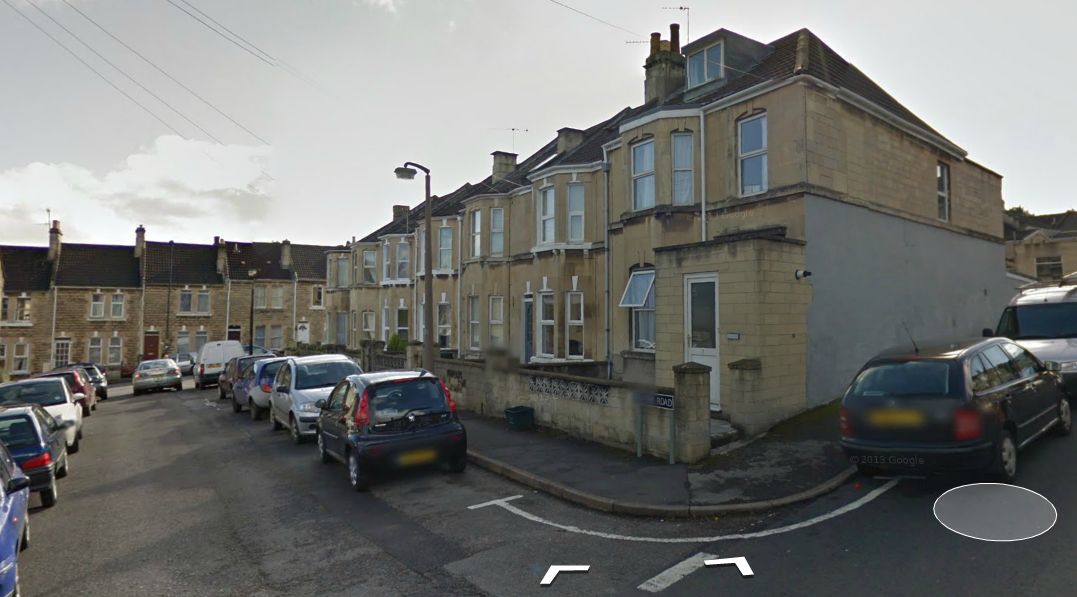 | ||
|
At the time of the 1901 census, the West family lived in the end house (here on the right) of Belvoir Road |
| After Belvoir Road, the family had a longer stay at 2 Westmoreland Street from 1902-10. Westmoreland Street runs between the main line railway and the Lower Bristol Road. The road took a direct hit in the bombing of April 1942 and number 2 did not survive. Now the offices of Ling Design (greetings card producers) are located in a modern building on the site. We can gain an idea of how the West home looked from the remaining houses at the southern end of the street. |
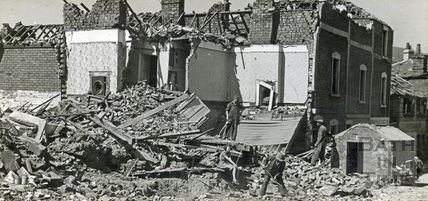 | ||
|
Westmoreland Street took a direct hit in the 1942 Bath Blitz and number
2 was destroyed, while a surface air raid shelter survived. [Image: Bath In Time] |
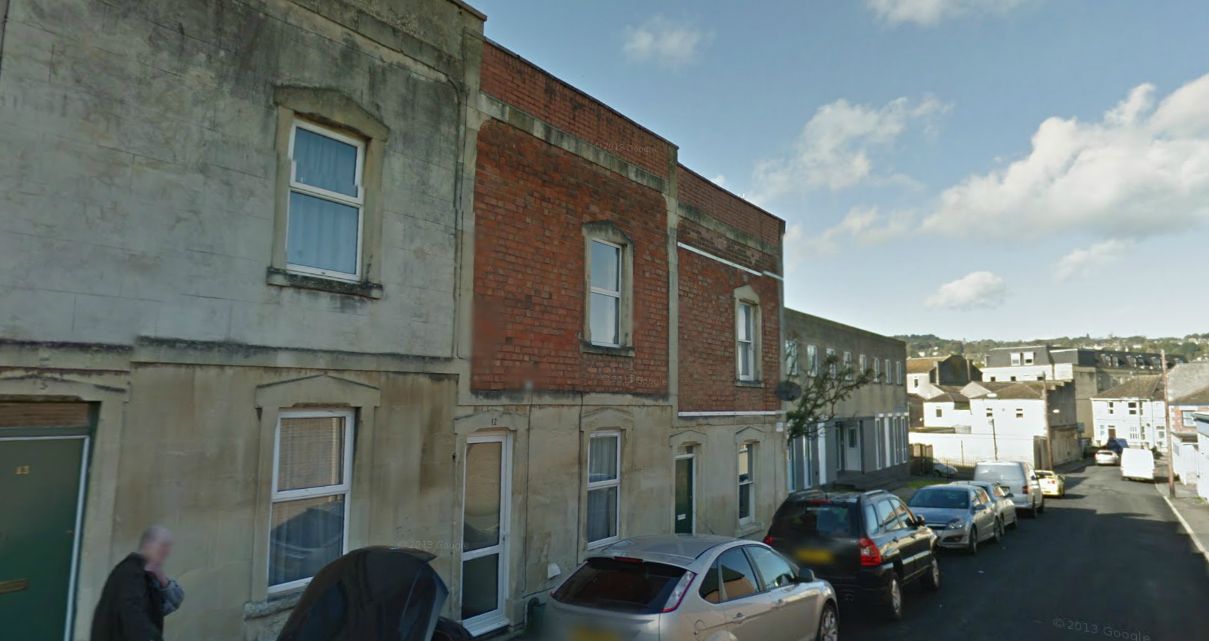 | ||
|
Westmoreland Street today. A more modern office building has replaced
the bombed houses where Ernest West lived between 1902-1910. |
|
The family’s next home – and Ernest’s last before he joined up to serve in WW1 – was at 21 Stanley Road. When the parish of Twerton joined up to the city of Bath, this street was renamed Stanley Road West to distinguish it from a short road with the same name off Manvers Street, in the city centre. |
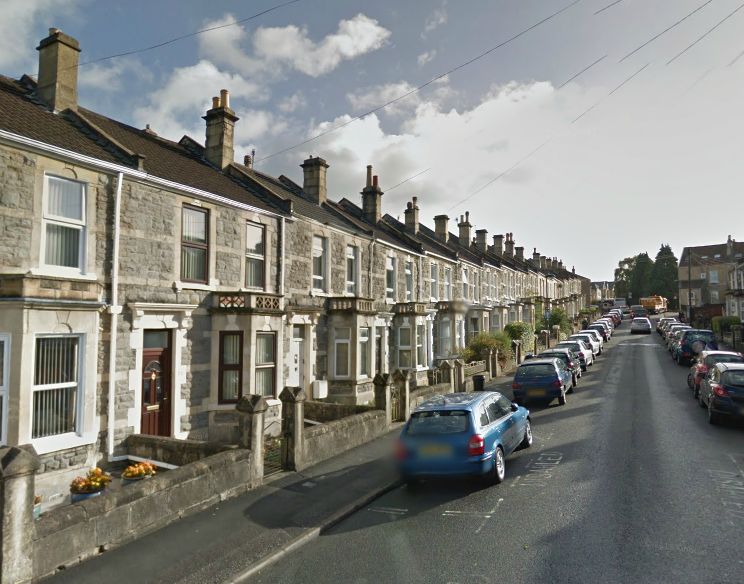 | ||
|
21 Stanley Road, (now Stanley Road West, on the left with the dark
woodwork), was Ernest’s final family home in Bath |
|
Pre-war years in the Wessex Royal Engineers 1910-14 The 1911 census shows the family in Stanley Road and an 18-year-old Ernest listed as a ‘fitter’s apprentice in the railway locomotive department’. Ernest had joined the Wessex Division of the Royal Engineers as a 'Territorial' in March 1910 (age 17y 6m), signing up for a 4-year stint of part-time / reservist soldiering alongside his apprenticeship. His attestation forms state that Ernest was employed in the 'Loco Dept. of the Somerset & Dorset Railway', so he would very probably have been employed in the yard and sheds at Green Park (now Sainsbury's / Homebase site). His apprenticeship work experience as a fitter (which his attestation papers show he had already begun) would have made him a good candidate for service in the Royal Engineers. His 1910 attestation papers were signed by Capt Richard Broadhurst-Dutton of the local Royal Engineers who later (when a Major) had to leave his post on active service in France to come back to Bristol for a very public divorce hearing at a time when this was quite a scandal. The 'Certificate of Trade Proficiency' signed in connection with Ernest joining the Royal Engineers in March 1910 sees him rated by Mr. Whitaker, his supervisor in the railway company, as a 'Very good' apprentice, although a similar appraisal by a Captain Boradaile in June of the same year rated him as 'indifferent'. Further documentation shows that Ernest attended annual summer training camps, each lasting two weeks:
Ernest's
4-year commitment to the Royal Engineers ended on 28th February 1914.
There is a question mark over whether he extended his association with
the Engineers. His serial number 411 from this 4-year period is not
carried forward into his WW1 service, where his serial number was 810.
This would seem to suggest that he ended his connection with the
Engineers in February 1914 but responded quickly to the call to re-join
when war broke out in early August. |
Ernest West in WW1 | ||
Territorial to 'Regular' in the Wessex Field Company of the Royal Engineers We know that the unit was on one of its annual summer training camps when war broke out in August 1914. It is likely that Ernest was not on the camp, but that he re-joined the unit very quickly after the outbreak of war on August 4th. With that exception, the first part of Ernest's WW1 story is likely the same of that of Ernest Mundy. Please see that page for detail of the Wessex RE in the early part of WW1. | ||
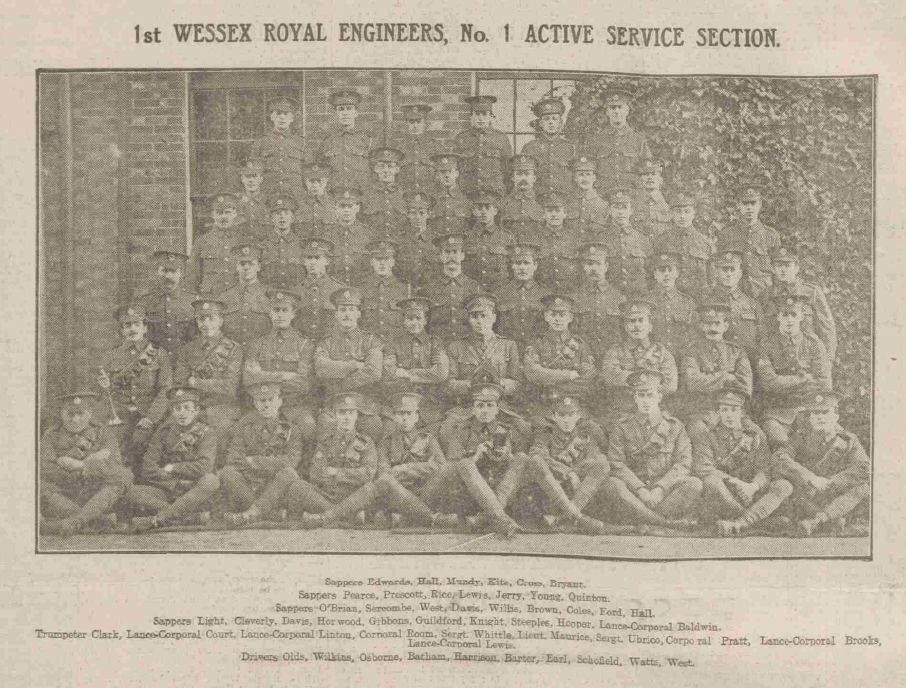 |
|
ABOVE: A
photograph of the 1st Battalion (Wessex) Royal Engineers
featuring Sapper Ernest West (3rd from left, 3rd row from top, not to
be confused with Driver West, right-hand end of bottom row) and also Sapper Ernest Mundy (3rd from left, back row).
[Image: Bath Chronicle & Weekly Gazette, 2nd January 1915.] |
 |
|
ABOVE: This second, much clearer, photograph is also of the Wessex Royal Engineers in an unknown location and of unknown date. Ernest West is to be found in the 4th row back, towards the right (clipped out in the image, below).
|
|
Ernest West’s comrade in the Wessex Engineers and former schoolmate Ernest Mundy was killed 26th July 1915. 1915: Marriage in Bristol and Birth of a SonErnest West was one of the very few men represented on the South Twerton school plaque who married. In the July-September quarter of 1915 – clearly during a period of leave from the Front – he married Margaret Louisa Chandler in Bristol. We don’t know further details of the date or exact place of marriage. Margaret Chandler was born in Dursley, Gloucestershire, in 1887 and grew up there. We know that, in 1911, Margaret was in service with a widow in Leonard Stanley, near Stonehouse (Glos.), but we don’t have any clue as to how she met Ernest West, although it is possible that she had a position in a household in Bath at some point in time. A further, interesting part of the story is that Ernest and Margaret had a son, Sidney Herbert, born in the April-June quarter of 1915, i.e. before the marriage. So it seems that Ernest was returning home to make an ‘honest woman’ (as they would have said at the time) of Margaret. We do not know for sure, but it is probable that Margaret never saw her husband again after he returned to active service. Sidney’s only contact with his father was probably during the very short period around his parents’ wedding, when he was just months old. |
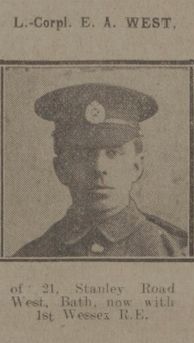 | ||
|
This photograph of Ernest appeared in the Bath Chronicle & Weekly Gazette in April 1915. |
To GreeceIn November 1915, 27th Division, including survivors of the Western Front, was ordered to Salonika, Greece. The following is an extract from ‘The British Army in World War I (3): The Eastern Fronts’: “In early 1915 an uneasy peace existed along the Danube. In the previous year, the Serbs had ejected the Austro-Hungarian invaders from their kingdom, and now the two armies were facing each other down across the broad river. But the Germans wanted the obstacle of Serbia removed in order to strengthen communications with their ally, Turkey. “Overtures were made to Bulgaria, promising territory in Macedonia in return for declaring for the Central Powers (Germany and its allies) and attacking the Serbs. An Allied force of 13,000 French and British troops, intended to aid the Serbs, was sent to Salonika (today called Thessalonika) in Macedonia in October 1915 but proved to be too little, too late. Away to the north, the forces of Austria-Hungary and Bulgaria fell upon Serbia from all sides, driving soldiers and civilians alike across the border with Albania in a cruel winter retreat. From there, in early 1916, the survivors were embarked on Allied ships which took them to refuge in Corfu, Italy and North Africa. Countless thousands of Serbs perished during the exodus; but the soldiers that survived eventually went to Salonika to make up more than one third of an Entente force that grew in time to 300,000 men. By late 1916 they were once again fighting on Serbian soil. “Greece, although technically neutral, favoured the Central Powers, and
an Allied Force marching over Greek territory to get to the border with Serbia
did little to win them over to the Allied cause. After clashing with superior
Bulgarian forces, the British and French withdrew to an enclave around Salonika,
where their force was built up to three British and two French Divisions by
December 1915. “In time, Russian and Italian troops arrived to swell their numbers, as the Serbian army rebuilt itself. “An Austro-Bulgarian offensive was launched against the Allied enclave in August 1916. In the fighting that lasted until September, the British formations held their part of the line as fighting flared around places with names such as ‘Horseshoe Hill’ and Machukovo. “By mid-September, the Allies were on the offensive, with the Serbian 1st Army driving west towards Monastir. In order to pin down the troops opposite them, the British conducted ‘raids’ against the Karajakois, Mazirko Yenikoi, Bairakli Juma and Tumbitza Farm; but the serious fighting was done by the French, Russian and Serbian troops attacking the Bulgarian positions before Monastir, which was occupied on 19th November. When winter put an end to operations shortly afterwards, the Serbs had suffered 27,000 casualties – one fifth of their force – to capture the second largest town in Serbian Macedonia.” 27th Division transferred in stages and was not complete in Greece until February 1916. We don’t know exactly when Ernest West sailed with the Wessex Field Company of the Royal Engineers to Greece. Once in Greece, the 27th Division’s first major engagement on what was known as the Struma Front was the capture of the Karajakois (Karajakoi Bala and Karajakoi Zir) 30th Sept – 2nd October. A book called "Under the Devil's Eye: Britain's Forgotten Army at Salonika 1915-1918” deals with these actions on the Struma Front. Bala was captured easily, clearing the enemy in just 20 minutes. Zir was a stiffer proposition and took the rest of the day. These actions were followed by the capture of Yenikoi on 3rd-4th October. |
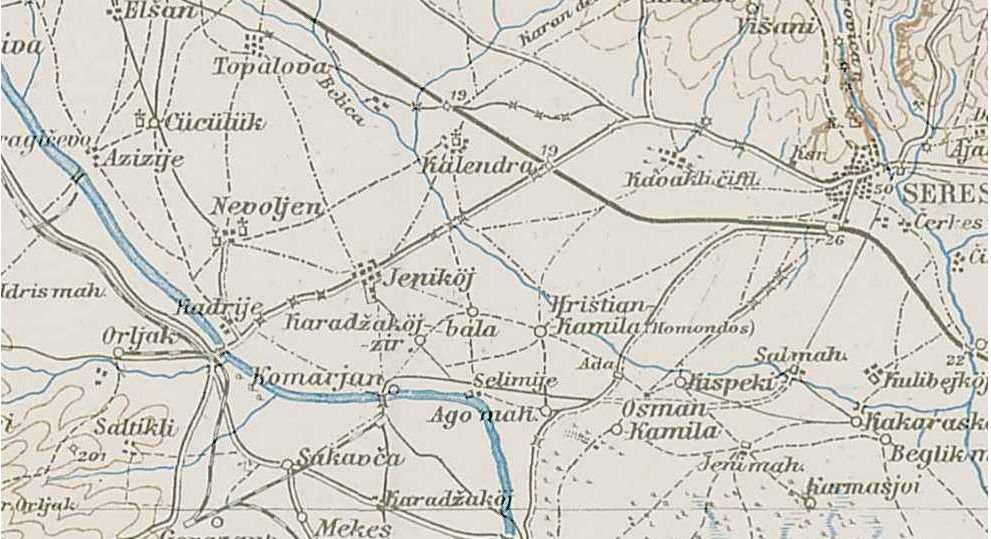 | ||
|
The area of Greece west of Serres where the Struma front was located
and where Ernest West was killed. Yenikoi (‘Jeniköj’) is near the centre of the
map, with Karajakoi Bala and Karajakoi Zir just to the south. |
Ernest West's Death | ||
|
Lance Corporal Ernest West was killed in action on the day following the capture of Yenikoi, the 5th October 1916, aged about 23. At some point in his military career he had been promoted to the rank of 2nd Corporal. | ||
Burial | ||
|
Ernest West is buried in Lahana Military Cemetery, Greece. The cemetery was begun in July 1916 for burials from the 27th Casualty Clearing Station, to which sick and wounded men were brought from the Struma front. | ||
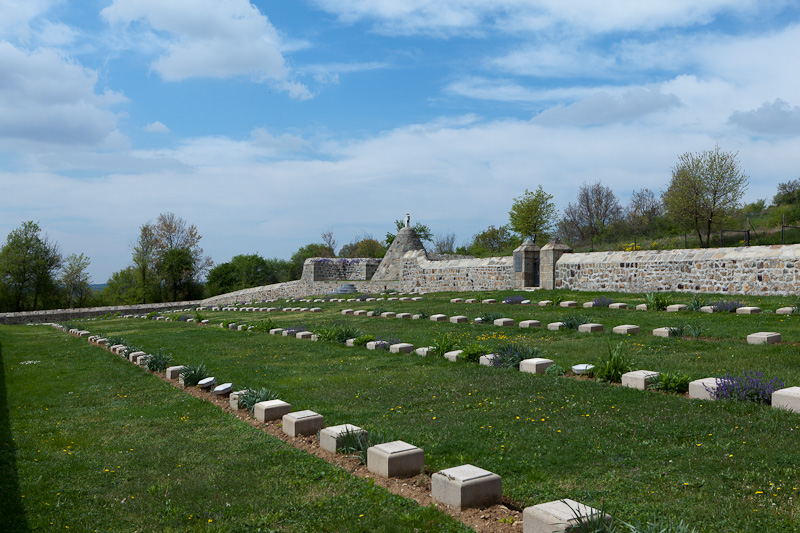 | ||
|
Lahana Military Cemetery in Greece, where Ernest West is buried. [Image: www.nzwargraves.org.nz] |
Decoration | ||
|
Ernest West would have been posthumously
awarded the 1914-15 Star (awarded to soldiers who fought in France before the end of
1915), the British War Medal 1914-18 and the Allied Victory Medal. | ||
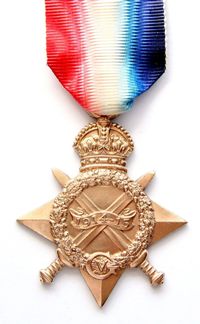 | 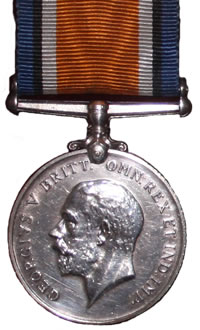 | 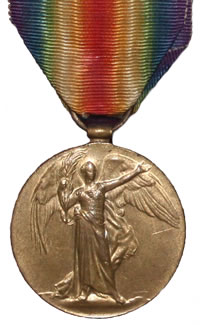 | ||
| 1914-15 Star | British War Medal 1914-18 | Allied Victory Medal |
Commemoration | ||
 In addition to his commemoration on the South Twerton School memorial, Lance-Corporal Ernest West is commemorated as follows: | ||
|
Bath War Memorial See separate page for details of the Bath War Memorial. Ernest West's inscription: |
 |
|
Widcombe Parish Memorial Ernest West is
commemorated on the Widcombe War Memorial outside the old parish church of St
Thomas A Becket, although his connection with the parish is not clear. It is
possible that, when he married in 1915, he (or at least his wife) took up
residence in the parish. |
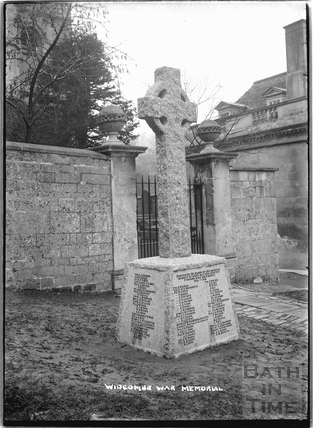 | ||
| An old ‘Bath in Time’ photograph of the Widcombe War Memorial in the 1920s, when it was fairly new. Ernest West is commemorated on this memorial, even though his connection with the parish is not clear. [Image: Bath In Time] |
| Lance Corporal Ernest West's inscription: |
 |
|
St Matthew's (Widcombe) Memorial Ernest West's name is included on the memorial in St Matthew's church at the bottom of Widcombe Hill (see separate page for details of the St Matthew's memorial): |
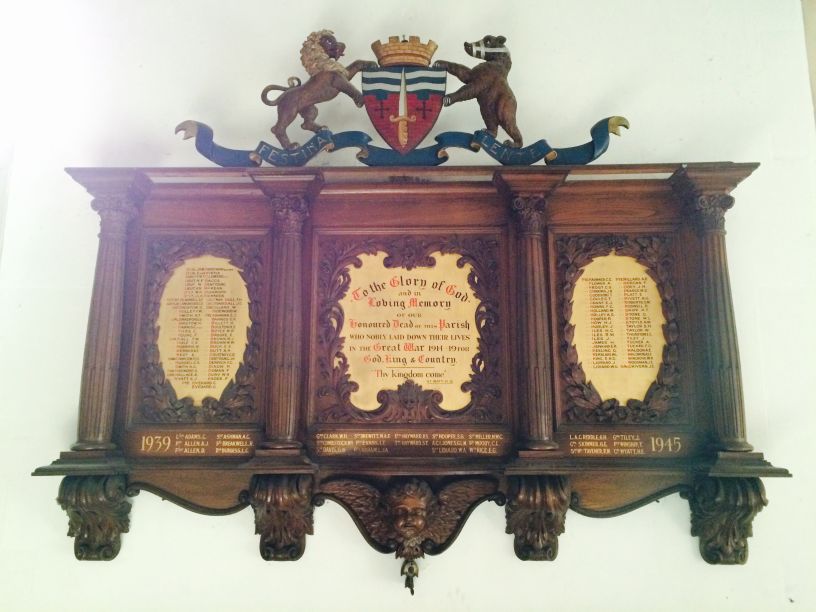 |
|
Ascension Church Memorial Ernest West's name is inscribed on the oak tablet in the Ascension Church (see separate page for details of the Ascension Church Memorial): |
 |
St James Church Memorial Ernest West is also commemorated on a brass plaque that was originally displayed in St James Church, Bath. This church stood where Marks & Spencer is now at the top of Southgate Street, but was bombed in 1942 and burned out as a result. The plaque was rescued and is now on display in St Barnabas Church, Southdown, where it is on view in the porch. More details of this memorial can be seen here. |
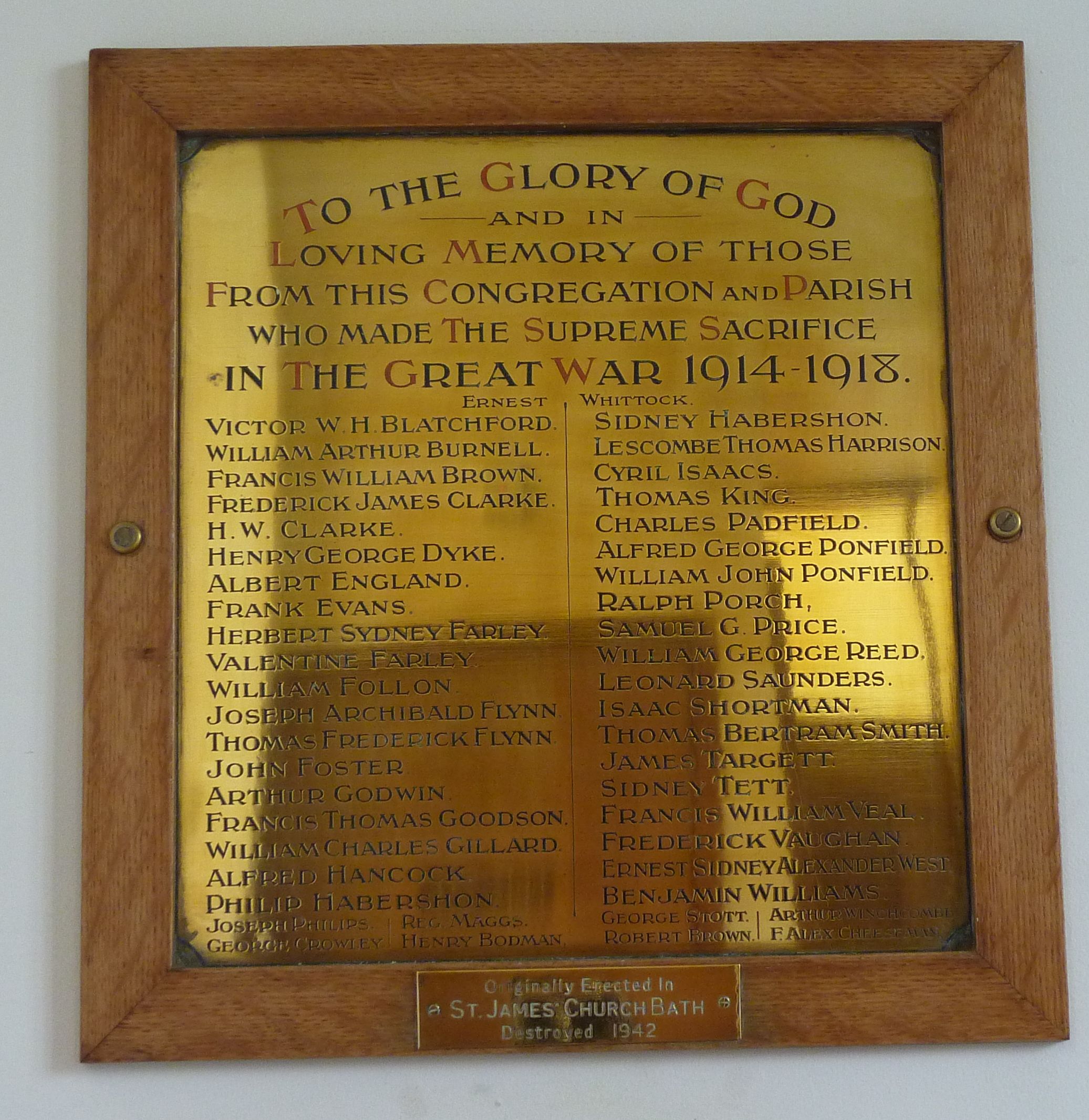 | ||
|
The St James Church memorial, now displayed in the entrance porch of St
Barnabas Church, Southdown. 'Ernest Sidney Alexander West' appears near the bottom right.. |
|
Wessex Royal Engineers Memorial, Bath Abbey In Bath Abbey there is a plaque - without names - to commemorate the Bath men who gave their lives in service with the Wessex Royal Engineers. Sadly, Bath Abbey is currently doing a poor job of honouring the memory of the fallen soldiers of WW1. They hosted a wonderful Vigil service on 4th August 2014, but key artefacts are not properly accessible, despite this having been brought to their attention. This plaque is one such. Instead of being on display as it should be, the Wessex RE plaque is behind a locked wooden screen in the North transept. If you wish to view the memorial, try to access the Abbey when an organist is performing or rehearsing and you may be lucky enough to find the screen unocked. Then you just have to fight your way past the stacked chairs... It really is very sad. |
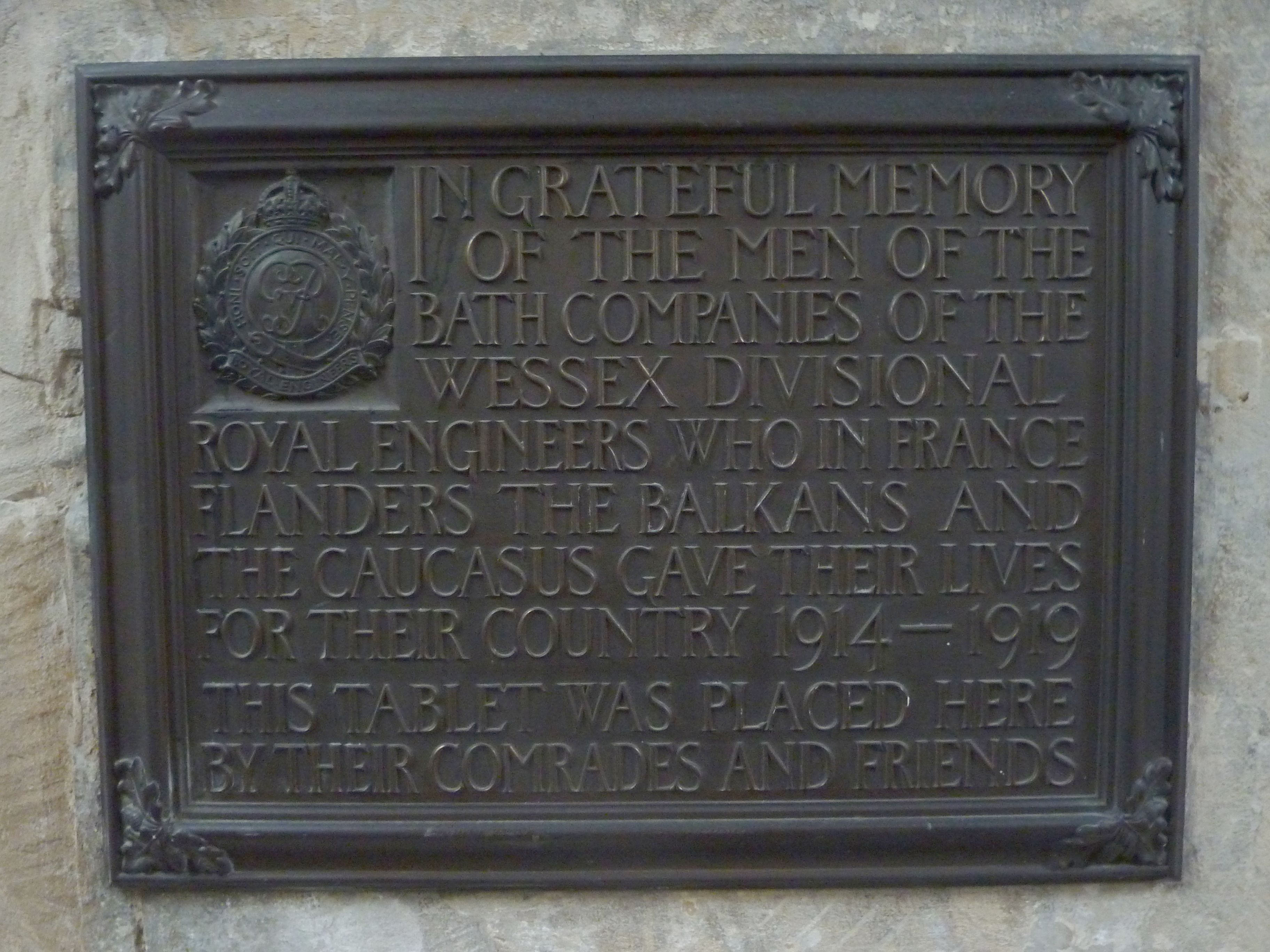 |
Further Information |
Ernest's son, Sidney West
Being born in 1915, Ernest’s son Sidney was of the generation destined to be affected by both the World Wars. He grew up without ever having known his father and in 1939, when WW2 broke out, Sidney was in his early-mid twenties. He joined the RAF and served in 100 Squadron, Bomber Command. He was a bomb aimer in a Lancaster Bomber, but his aircraft (ED653, code LW-E) crashed in France on a bombing mission to Stuttgart on 15th April 1943. His grave is in Bohain Cemetery, near St Quentin. |
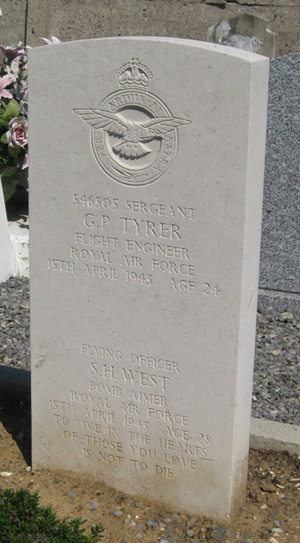 | ||
|
The grave of Sidney West, Ernest West's son, in France. |
|
See also this story on the BBC website: http://www.bbc.co.uk/history/ww2peopleswar/stories/59/a2959059.shtml The records show that Sidney was married in 1941 to Lilian Parry at St Mary’s church in Bathwick; this means that he almost certainly married when home on leave during WW2: an eerie repetition of the actions of his father. Sidney’s mother, Margaret West, had therefore lost a husband in WW1 and a son in WW2. She died in Thornbury in 1968. Lilian West (Sidney’s wife) remarried to a Mr William Wetherill in 1947 and died in 1994, aged 94. Living relativesIn May 2014 we were successful in making contact with descendants of Ernest West's sister Gladys, who became Gladys Simmons on marriage in 1922 and had daughters Mary & Betty. Betty became Betty Collins on marriage in 1950 and had three children; one of these being Ruth (now Ruth Gould), who is Ernest West's great-niece. Ruth was kind enough to share the following photographs: |
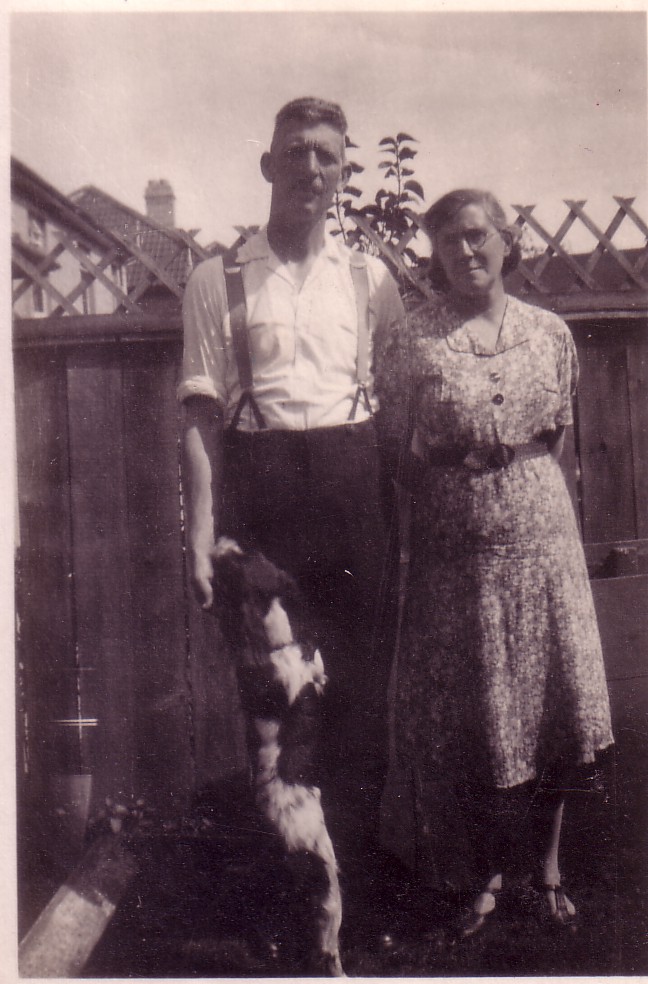 | ||
|
On the right is Ernest West's sister Gladys, c1945, with husband Charles Simmons |
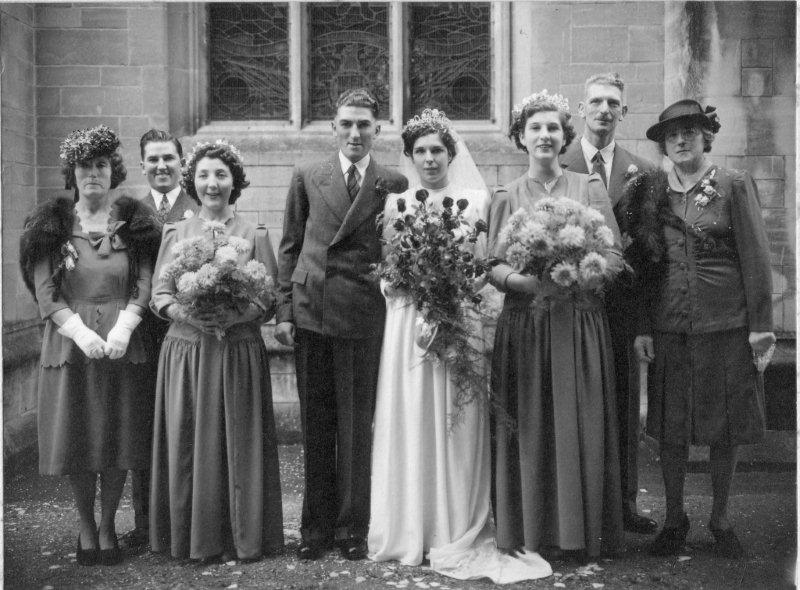 | ||
|
The marriage in 1947 at St Luke's of Mary Simmons & William Warden. Mary was the niece of Ernest West. Ernest's sister Gladys (mother of the bride) is on the extreme right. |
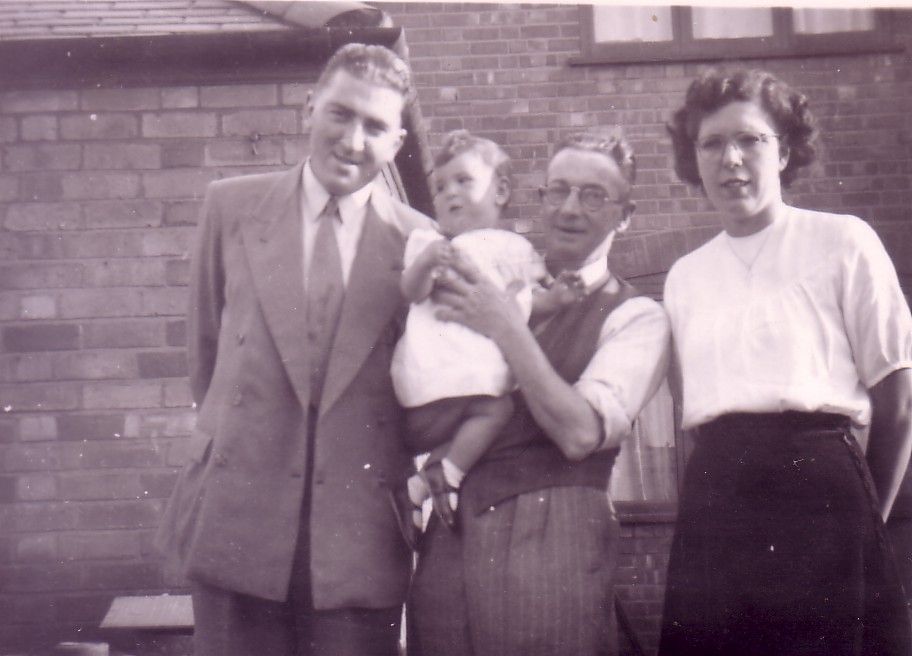 | ||
|
The elderly gentleman is Sidney West, Ernest's father, seen here aged about 83 in circa 1951, holding his great-granddaughter. |
Many thanks to Ruth Gould for allowing us to share these photographs. Sadly, no artefacts directly relating to Ernest West have come to light from Ruth Gould's part of the family. It is of course possible that they went to Ernest's wife Lilian, who became Lilian Wetherill in 1947. It would therefore be great to hear from any other living relatives of Ernest West or descendants of Ernest's wife through her later marriage. Please get in touch!If you have any further information on Ernest West or want to suggest corrections / improvements for this page, please use the Contact page to get in touch. |
Further Reading | ||
For more details on the specific circumstances of Ernest West's contribution to the war:
| ||
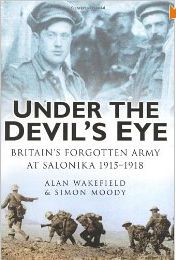 |